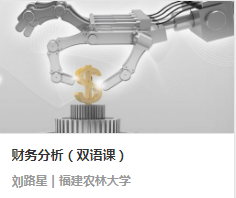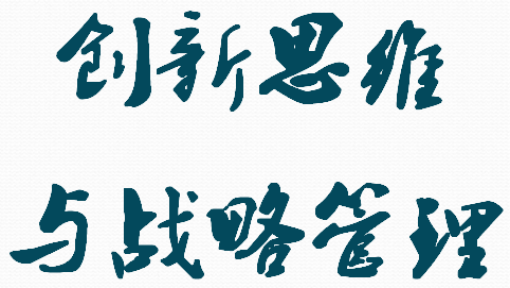
当前课程知识点:数字集成电路分析与设计 > Exercise I > 3. Problem 3 > Video
下面让我们进行到第三题
同样的首先听我叙述题目
然后你可以暂停视频
仔细思考再回到视频中
听我的解答分析
那么这道题里我们将设计一条反相器链
来驱动负载电容
假设输入电容为1
负载电容等于10000
这里我们使用对称的反相器(也就是Tplh=Tphl)
反相器的本征延时是tp0
本征电容是输入电容的两倍
选择合适的级数使得总延时最短
并且以tp0为基础推导总延时
这就是问题的描述
下面你可以暂停视频进行思考
再继续视频听我的分析
让我来分析这个问题
这道题看起来非常简单对吧
只要使用之前教的方法
我们就可以很容易的推导出结果
然而这里还是有一些小技巧
首先让我们回顾一下这道题涉及的主要知识点
如果你假设Cext
ext在这里表示输出电容
Cext等于f乘以Cg
Cg表示输入栅极电容
同时f等于Cext比Cg
是由输出电容比删电容
这也被称为有效扇出
因此我们知道tp等于tp0
也就是这个反相器的延迟等于tp
等于tp0乘以1加Cext/Cint
int这里是指反相器的本征延迟
最后得到tp0乘以1加上f比γ
设计反相器链有两种情况
我们将再次熟悉它们
第一种情况下我们已知反相器链的级数
同时我们也知道CL
比第一级反相器的栅电容的数值
因此我们可以求得f等于F的N次方根
那么tp就等于N乘以tp0
乘以1加F的N次方根比γ
如果N确定了
当然在大多数情况中N不确定
我们并不知道反相器级数
我们仅仅知道电容
CL与输入电容的比值
这里的γ是由工艺决定的
在亚微米制程中一般我们假设为1
而且一般情况下
我们会假设f等于3.6或近似的4
这样f就近似等于e的1加γ比f次方
这是一个超越方程
至于N
也就是反相器链的级数
等于log F比log f
所以tp等于logF比logf再乘以tp0
也就是反相器链级数N乘以tp0
再乘以括号内的1加f比γ
所以这些就是这道题的背景知识
下面我会给出解答
这道题的主要问题是
题中说本征电容式输入电容的两倍
也就是说这道题里的γ不在等于1了
这意味着因为γ
等于本征电容除以栅极电容
因为此时本征电容除以栅极电容
等于2不再等于1了
因此这里的γ等于2
如果γ等于2
我们就不能再默认f等于3.6了
我们必须采用这个方法
通过这个方法来推导f的值
通过这个方法我们就能推导出正确的f
我们知道tp等于这个式子
tp0乘以1加f比γ
此处的γ等于2
tp等于N乘以tp0乘以之后这个式子
1加F的N次方根比γ
我们还知道
F等于CL比Cgin等于10000
所以回到问题中我们可以求解F
我们知道负载电容10000
同时输入电容等于1
所以CL比Cgin等于10000
再加上我们知道f等于F的N次方根
因此我们可以得到这个超越方程
我们可以使用
matlab这样的计算矩阵的工具来求解
我们可以求得当γ等于2时f等于4.64
而不再的关于3.6了
同时N等于lof F比log f等于6
最后我们可以求解出tp
等于19.92乘以tp0
这道题告诉我们
不要总默认为γ等于1
在一些特别的情况下γ可以可能并不等于1
也可能等于2
所以求解问题时
应该根据基本的求解方法
而不是死记数字
例如如果你只记得f等于3.6
那么这道题就不能正确求解
而根据定义的方法
我们可以求解出f等于4.64
从而推导出N等于6
这就是这道题的解
-1
--文档
-1.Introduction to Digital IC
--Video
-2.Architecture of Digital Processor
--Video
-3.Full Custom Design Methodology
--Video
-4.Semicustom Design Methodology
--Video
-5.Quality Metric of Digital IC
--Video
-6.Summary and Textbook Reference
--Video
-7.HW--作业
-7.PPT
--补充材料1
--补充材料2
-Key Points Review of Last Lecture
--Video
-1.Introduction
--Video
-2.The Diode
--Video
-3.The MOSFET Transistor
--Video
-4.Secondary Effects
--Video
-5.Summary and Textbook Reference
--Video
-6.HW--作业
-6.PPT
--补充材料
-Key Points Review of Last Lecture
--Video
-1.Introduction
--Video
-2.Static Behavior
--Video
-3.HW--作业
-3.PPT
--补充材料
-Key Points Review of Last Lecture
--Video
-1.Dynamic Behavior I
--Video
-2.Dynamic Behavior II
--Video
-3.Power Dissipation
--Video
-4. Summary and Textbook Reference
--Video
-5.HW--作业
-5.PPT
--补充材料
-1.Introduction
--Video
-2.Static CMOS Design I
--Video
-3.Static CMOS Design II
--Video
-4.HW--作业
-4.PPT
--补充材料
-Key Points Review of Last Lecture
--Video
-1.Static CMOS Design III
--Video
-2.Static CMOS Design IV
--Video
-3.Dynamic CMOS Design
--Video
-4.Summary
--Video
-5.HW--作业
-5.PPT
--补充材料
-1.Introduction I
--Video
-2.Introduction II
--Video
-3. Static Latches and Registers I
--Video
-4.Static Latches and Registers II
--Video
-5.Static Latches and Registers III
--Video
-6.HW--作业
-6.PPT
--补充材料
-1.Key Points Review
--Video
-2.Dynamic Latches and Registers I
--Video
-3.Dynamic Latches and Registers II
--Video
-4.Dynamic Latches and Registers III
--Video
-5.Pulse Register
--Video
-6.Pipelining
--Video
-7.Schmitt Trigger
--Video
-8.Summary and Textbook Reference
--Video
-9.HW--作业
-9.PPT
--补充材料
-1. Introduction
--Video
-2. Adder: Full Adder (Definition)
--Video
-3. Adder: Circuit Design
--Video
-4. Adder: Logic Design I
--Video
-5. Adder: Logic Design II
--Video
-6. Adder: Summary
--Video
-7.HW--作业
-7.PPT
--补充材料
-1. Key Points Review
--Video
-2. Multiplier
--Video
-3. Shifter
--Video
-4. Summary and Textbook Reference
--Video
-5. HW--作业
-5. PPT
--补充材料
-1. Introduction
--Video
-2. Capacitance
--Video
-3. Resistance
--Video
-4. Electrical Wire Models
--Video
-5. Summary and Textbook Reference
--Video
-6. HW--作业
-6. PPT
--补充材料
-1. Introduction
--Video
-2. Capacitive Parasitics
--Video
-3. Capacitive Parasitics II
--Video
-4. Resistive Parasitics
--Video
-5. Summary and Textbook Reference
--Video
-6. HW--作业
-6. PPT
--补充材料
-1. Assignment Solving
--Video
-2. The teaching assistants want to say
--Video
-1. Problem 1
--Video
-2. Problem 2
--Video
-3. Problem 3
--Video
-4. Problem 4
--Video
-5. Problem 5
--Video
-6. Problem 6
--Video
-7. Problem 7
--Video
-1. Problem 8
--Video
-2. Problem 9
--Video
-3. Problem 10
--Video
-4. Problem 11
--Video
-5. Problem 12
--Video
-6. Problem 13
--Video
-7. Problem 14
--Video



